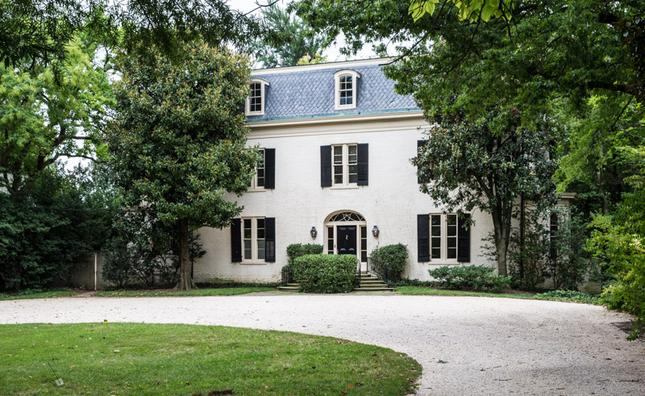Graham Mansion Dispute Nearing End?
By • May 12, 2021 0 5608

The drawn-out dispute between neighbors over renovations to one of Georgetown’s most treasured historic mansions, formerly owned by the late Katharine Graham, publisher of the Washington Post, surfaced again at the May 3 meeting of the Georgetown-Burleith advisory neighborhood commission. The new plans for the property, at 2920 R St. NW, were met with almost all the same criticisms as during the heated confrontation at an ANC 2E meeting seven years earlier.
This time, the intense fire was gone. At 10:30 p.m., the ANC passed a resolution that requested the Old Georgetown Board — the federal commission with final say over all construction in historic Georgetown — to postpone its scheduled Thursday review of the new plans until June. “What’s another month after all these years?” asked ANC Chair Rick Murphy with a sigh. But no objection to the plans was expressed.
The fate of the mansion has long been of intense interest to Georgetown residents and visitors. It was once owned by George Washington’s great-grandnephew, and then by William “Wild Bill” Donovan, who founded the agency that preceded the CIA.
The Federal-style house has been expanded and remodeled several times, lastly by the Grahams, who bought it in 1946. With the growing prominence and power of the Washington Post, the home became the indisputable center of D.C.’s politics-focused social life.
Katharine Graham died in July of 2001. She is buried next to her husband at Oak Hill Cemetery, directly across the street from the house’s almost one-acre front yard. Mark Ein, a venture capitalist who grew up in Bethesda, Maryland, and the District and founded the Washington Kastles tennis team, bought the empty house in 2002. After marrying in 2013, he and his wife, the former Sally Steibel, made plans to modernize and expand the house, including the narrow circa-1915 kitchen.
But neighbors Calvin and Jane Cafritz — he the son of a major D.C. property developer and she an attorney — who share the driveway with the property, objected. They felt the addition was too big and too close to their house, and that it would damage the historic stone walls on 30th Street, as well as some historic trees. The Cafritzes especially objected to the garage that was to be attached to the side of the house.
The plans were sent back with recommendations by the OGB. Seven years later, at this month’s ANC meeting, prominent Georgetown architect Outerbridge Horsey presented new plans showing the decreased size of the remodeled house and a partially underground garage, its entrance hidden by a stone wall. The key historic tree in question had died; new landscaping was planned to stabilize the backyard.
The Cafritzes objected again, saying it was still too large and that the remodeled sections would be seen from the street and take away from the historic prospect of the house. Horsey noted that visible additions to historic homes are not forbidden by the OGB. After several rounds of discussion, the visibly weary commissioners voted to ask the OGB to postpone their review to give more time for comment. “But we really have no authority over the OGB schedule,” Murphy stated.
As of press time, the action taken by the OGB was unknown.

